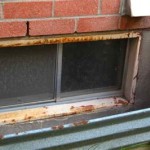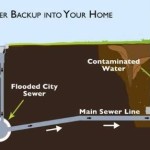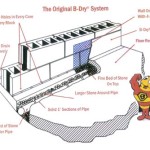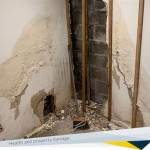How to Drain a Water Heater in a Basement: A Step-by-Step Guide
A water heater is an essential appliance that provides hot water for your home's faucets, showers, and other fixtures. It's important to maintain your water heater regularly to ensure it operates efficiently and safely. One necessary task is draining the water heater, which may be required when replacing the unit, performing maintenance, or in the event of a leak.
Safety Precautions
Before starting the process, follow these safety precautions:
- Turn off the gas or electricity supply to the water heater.
- Allow the water heater to cool down for several hours to prevent scalding.
- Wear appropriate safety gear, including gloves and eye protection.
Materials Required
Gather the following materials before starting:
- Garden hose (at least 10 feet long)
- Hose bib adapter
- Bucket or drain pan
- Wrench or pliers
Step-by-Step Instructions
- Connect the Hose: Attach the hose bib adapter to the water heater's drain valve, typically located at the bottom of the tank. Then, connect the garden hose to the adapter.
- Place the Drain Hose: Position the end of the garden hose into a bucket or drain pan to collect the water.
- Open the Drain Valve: Using a wrench or pliers, carefully open the drain valve by turning it counterclockwise. Allow the water to drain slowly and steadily.
- Monitor the Draining Process: Keep an eye on the water level in the bucket or drain pan. If it becomes full, pause the draining process and empty it.
- Drain the Pressure Relief Valve (Optional): If the water heater has a pressure relief valve, you can open it to release any remaining pressure and facilitate draining.
- Flush the Tank (Optional): Once the tank is drained, consider flushing it with clean water to remove any sediment or debris. To do this, turn off the drain valve and reconnect the water supply. Allow the tank to fill and then drain it again.
- Close the Drain Valve: Once most of the water has been drained, close the drain valve by turning it clockwise until it is snug.
- Disconnect the Hose: Disconnect the garden hose from the water heater and the hose bib adapter.
Additional Tips
Here are a few additional tips to keep in mind:
- If you encounter difficulty opening the drain valve, do not force it. Contact a plumber for assistance.
- If the water is heavily discolored or contains large amounts of sediment, it may indicate a more serious problem. Seek professional help.
- Regularly draining and flushing your water heater helps extend its lifespan and improve its efficiency.
Conclusion
Draining a water heater in a basement is a relatively straightforward task that can be completed in a few simple steps. By following the instructions outlined above and adhering to the safety precautions, you can safely and effectively drain the water from your unit. Remember to monitor the draining process carefully and seek professional assistance if necessary. Regular maintenance of your water heater, including proper draining, will ensure its proper operation and longevity.

Leaky Water Heater Basement Waterproofing Jes

T P Basement Drain Question

How To Drain A Water Heater Bob Vila

How To Drain A Water Heater In 5 Simple Steps

How To Flush Your Hot Water Heater The Art Of Manliness

How To Flush Or Drain A Water Heater Hometips

Water Heater Flooded Basement What To Do Damage Tips

Prevent A Leaking Water Heater Disaster 5 Tips 1 Tom Plumber

How To Maintain Your Water Heater True Value

Hot Water Heater Leaking Basement Waterproofing







